Essential Backpacking Hygiene Tips & Feminine Care in the Outdoors
Alright, this one’s for the women backpackers out there. Yes, you boys may be able to glean something from this, and definitively give it a read if you are interested, but don’t say I didn’t warn you! In this article we are going to give you the dirt on essential backpacking hygiene, specifically female hygiene while backpacking in the outdoors.
Sure, you may be the kind of gal that likes to play in the dirt, but that doesn’t mean you don’t care about personal hygiene while camping and backpacking. Even the dustiest of dirtbag darlings like to stay clean when adventuring outside.
This guide to feminine care while backpacking will help you stay clean while still enjoying the great outdoors. These tips for staying clean in the backcountry are designed to not only help you keep it fresh but also minimize your impact on the environment.
So let’s get down to it and answer your most burning questions about personal care as a woman backpacker. Warning: we are about to get REAL here because let’s be honest, everybody poops. If some of these subjects gross you out, proceed with caution.
Note: Some of the links in this post may contain affiliate links.
Essential Backpacking Hygiene Tips for Women Backpackers
Keep Those Hands Clean
The best way for anyone to ensure they’re off to a great start with backcountry hygiene is to keep your hands clean. This means using hand sanitizer before and after bathroom breaks, handling food, or whenever your hands get dirty. If you’re sharing snacks with a buddy, be sure to dump snacks in each other’s hands, instead of reaching into a communal baggie and contaminating it.
Stay Fresh-Faced in the Wild
Keeping your face feeling fresh and clean can be a real mood booster. I like to carry around a quick dry towel or use a BUFF headband to quickly wash my face. I typically just use water, since soaps can leave harmful chemical residue on the environment. If I have had a day where I’ve really layered on the bug spray and sunscreen, I’ll wipe my face with a wipe. Of course, I’ll always pack out my wipes in my waste bag.
Keep Unruly Hair Picture-Perfect
I’ve got a confession to make: I’m very lazy about my hair when I go backpacking. Do you know what saves me? Braids. Braiding your hair will keep your locks neat and tidy if you’ve got long enough hair. Braids, hats, and beanies. Boom. Bad hair day solved.
As a seasoned pro at not washing my hair (I’ve gone 7 days once), the itchiness is the worst part. You can bring along dry shampoo or baby powder to help with the itchy scalp. For just a few nights, you should be fine, but if you’re backpacking for weeks, it might be worth it to carry along some dry shampoo.
Skip the Perfume
And possibly the deodorant. Perfume attracts unwanted attention and wildlife, which is the last thing you want while you’re sleeping at night. Some people get a rash by wearing deodorant without a shower so feel free to leave the stick at home, too – personally I never bring it. It’s just extra weight, and I’m going to smell regardless!
Learn to embrace it. Sure you may be a bit riper, but no one cares when you’re in the wild. This is your chance to let it all hang out and be comfortable in your skin.
PSST.. ARE YOU READY TO FINALLY UNDERGO YOUR OWN BACKPACKING TRANSFORMATION?
Join me (and your peers) on a transformational adventure, where you will learn how to confidently go on your first ever (or perhaps your first solo) outdoor backpacking trip without the constant fear of getting lost, the debilitating worry of being unprepared, and the lurking feeling that you lack the "know-how" and skills required to stay safe on the trails. Click below to be the first to know when my one-of-a-kind backpacking program re-opens again for enrollment!
Backpacking on your Period
Getting your period on a backpacking trip doesn’t have to be a deal breaker or a total bummer. There are several ways to keep everything under control and tidy while hiking on your period. But, first, it’s important to understand that one of the key elements of backpacking is packing out your trash, and this includes items such as toilet paper and tampons.
To put it plainly, don’t bury your tampons (animals dig it up - eww!), carry them out with you. For many of us, that’s kind of gross. Here are a couple options to deal with this.
Have a Waste Baggie
The key to packing out your period products is to have a designated bag for the job. For a quick and easy solution, you can cover a Ziploc baggie with duct tape and add a little baking soda to the bag to help with the smell. Then put all your used feminine products in the baggie and toss it away when you get home.
Sometimes I will get a lightweight stuff sack and keep my unused items loose in the stuff sack along with a separate ziplock for my used items. Then when heading off for the bathroom, I still maintain personal privacy because friends will just assume you’re bringing TP or backpacking wipes with you.
Another option is the Animosa Go With Your Flow Pack, which is specifically designed to hold everything you need to handle your period in the backcountry. It has small pockets to hold unused supplies, and an interior zippered pocket to contain used tampons and other waste. Plus, the larger size can fit hand sanitizer and a trowel, so you can make it your entire bathroom kit. She Dreams of Alpine’s Content Manager Kate swears by her Animosa pack!
Use a Menstrual Cup
Many women love the option of using a menstrual cup while camping and backpacking. It’s simple to use, and you don’t have to fuss with a bunch of trash (not to mention the cost savings). Use a little water to rinse out the cup each day, or a wipe designed for cleaning menstrual cups (of course, pack out the used wipes).
If you’re out for many days, you’ll likely want to bring along some biodegradable, mild backpacking soap to wash your cup out with. Just be sure to bury the organic contents of the cup in a cat hole, just like you would if you were going to the bathroom.
If you're new to the cup club, be sure to practice with it at home first, as it takes some getting used to. Also, different cups fit different women better, so don’t be discouraged if the first cup you try isn’t right for you. With all the options now, you should be able to find one that fits securely and can handle your flow.
Wear PERIOD PANTIES
Period panties can make things a lot easier when it’s that time of the month on the trail. Depending on your flow, they might be all you need or you can wear them as a backup with tampons or a menstrual cup to prevent any messy accidents that are hard to deal with in the backcountry.
If you know your period will be coming during your backpacking trip, you can just replace some of the regular underwear you pack with period underwear so they don’t take up much extra space. It’s also a good idea to bring a stuff sack or plastic bag to put the used period panties in so they don’t get blood on anything else in your pack.
Even if you’re not sure if you’ll get your period when you’re on the trail, some women like to wear period panties while hiking to absorb sweat, so they might be worth bringing just in case.
GRAB MY [FREE] OUTDOOR BACKPACKER STARTER KIT
I created the Ultimate Outdoor Backpacker Starter Kit for you (and it's FREE)! This starter kit is filled with 14 pages of my best hiking and backpacking tips to help you learn what it takes to become a safe, confident, and self-sufficient outdoor backpacker!
The Best Way to Pee in the Woods
Going to the bathroom in the woods, especially for the non-initiated can be an intimidating experience. Peeing is one of those times where I’m really jealous of the guys. They just have it so much easier while we have to deal with split streams, extra backpacking toilet paper, splashback, squatting with a pack on, snow, and everything in between.
I’ve tried countless methods of peeing outside throughout all the seasons and I’ve become something a she-wiz-wizard. There are several methods I recommend giving a go (see what I did there?), but only one that I truly find to be the best.
Drip Dry or Use Natural Materials
This is my actually my go-to method because, quite honestly, I’m a little bit lazy. It’s also very effective in a pinch. If you use leaves or rocks, you still risk getting dirty in your nether regions (or accidentally wiping with a poisonous plant - ouch!). So take care – that’s why I usually I just drip dry.
Advantages: No new skills or special gear required.
Disadvantages: You’re still squatting. This method is dirty, and if you don’t allow for a long enough “drip dry” time, it could be a bit uncomfortable walking.
Skip the Backpacking Toilet Paper & Use a Rag or Cloth
If you’re just going number 1, skip the hassle of toilet paper (and packing it out), and use a pee rag instead. Kula Cloth is a personal fave, since it has anti-microbial material and a simple snap to attach to your pack. Plus, Kula Cloths come in a variety of fun and funky patterns, and the company is woman-owned and awesome!
You can just do your business and use the cloth instead of toilet paper. Then attach the cloth to your pack and let it dry in the sun. The sun and anti-microbial fabric work together to keep the cloth clean. After trying out the Kula Cloth for awhile, I really love it!
Advantages: You can wipe yourself to feel clean and dry.
Disadvantages: Again, you’re squatting, and if you are backpacking for multiple days you may want to take biodegradable soap to wash your Kula Cloth (or comparable pee rag). Or just bring a second Kula with you!
Use a Pee Funnel
A pee funnel is another one of my preferred methods for weeing in the outdoors, especially if I know there won’t be a lot of privacy on the trails (like when there are lots of people but minimal tree coverage or rocks to hide behind). I use my pee funnel a lot in mountaineering, and sometimes in #vanlife.
With the pee funnel, you don’t have to deal with popping a squat ever again. And the best part is you never really expose your backside so you can stay toasty and covered when it’s cold outside. A pee funnel or female urination device is one of those god-send gadgets you never knew you needed until your try it out.
Look for a pee funnel that has a good seal, plenty of funnel space (so you don’t have to hold back when you really gotta go), and is easy to clean.
I keep my funnel wrapped in a pee rag, so I can give myself a quick wipe when I’m done. To rinse, simply run some water through the system. I’ve used mine for up to two weeks without it getting stinky or gross. These also work well for travel (ahem, nasty public restrooms).
But a pee funnel does take some practice. Everything you’ve ever been taught tells you that peeing standing up will end badly, so take a few practice runs at home if you’re a little gun shy.
Advantages: You don’t have to worry about splashback, snow, or exposing yourself to the elements.
Disadvantages: It’s another piece of gear you have to buy and carry, and takes some practice getting used to.
What About Pooping in the Backcountry
There’s no avoiding the squatting in this situation, and it’s really important that you practice Leave No Trace principles when it comes to pooping in the outdoors. So what are the rules around this?
The best Leave No Trace practice recommends that you “deposit your human waste in catholes dug 6 to 8 inches deep, at least 200 feet from water, camp and trails. Cover and disguise the cathole when finished.”
In certain environments, usually in the dry desert or overcrowded areas, a WAG bag is recommended instead of a cathole. In fact, WAG bags are required when hiking Mount Whitney, and every Mt. Whitney hiker who receives a permit also gets a WAG bag. A WAG bag holds human waste so you can pack it out.
If you want to know what’s in my pack for peeing and pooping outside, here’s a sneak peek into my backpacking bathroom kit:
1) Biodegradable Wipes - They come in handy for freshening up just about everything. Just make sure to pack them out!
2) Kula Cloth - An anticrobial and awesome pee cloth.
3) Ziploc Bags - To use for your feminine hygiene kit and to carry out waste.
4) Lightweight Backpacking Trowel - To dig those trusty catholes.
5) Hand Sanitizer - To kill germs and keep your hands clean.
How to Keep Clean Down There
Every woman is different, but unlike men, we have a bit more to worry about when it comes to staying clean in our nether regions. When you’re backpacking, you’re getting sweaty and dirty, and usually you’re traveling light without enough pairs of clean underwear for each day. So in order to keep things fresh down there, you’ll need to get a little creative.
>>>Check out our guide to the best hiking underwear for women here.
For starters, don’t try to shave while backpacking. That is most certainly going to end poorly for you, especially with all the friction from hiking. I like to think of the shower after a big backpacking trip as a holy experience and that includes shaving and trimming.
The next trick is letting yourself get some air down there. When you’re at home, you probably change into clean clothes at least daily, but while backpacking, you’re often wearing the same clothes for days on end. So let your body breathe a little on the trail.
Maybe go commando at camp for a few hours (trust me, it helps), or put on a fresh pair of underwear (underwear inside out counts for a fresh one while backpacking). As long as my backpacking trips are within the 3-5 day range, I usually opt to just bring enough fresh pairs for one each day.
You can also use pantyliners and change those out when you can’t change underwear (just pack them out). And baby wipes aren’t a bad thing to have on hand, since you can quickly do a wipe down or take a sponge bath if you need to refresh.
Is it Safe to Take a Bath in Nature?
After a long day on the trail, a dip into a pristine high-alpine lake may sound like pure bliss, but think twice before diving in. These watersheds (and those in other delicate areas such as desert potholes) are insanely fragile. Fish and other organisms in high alpine lakes have rarely been subject to humans or other invasive species, so they hang in a pretty delicate balance.
When you take the plunge into a water source in a sensitive wilderness area, you taint that water source with sunscreen, bug spray, beauty products and even the oils from your own skin. So please look but don’t touch, so you don’t introduce harmful chemicals and bacteria into an already delicate ecosystem.
But sometimes you’ve got to bathe, and I totally understand that. After I spent four days at a basecamp high in the backcountry climbing mountains, I needed some relief from my own juices. So I simply stripped down in the warm afternoon sun and gave myself a backpacking shower by doing a sponge bath with water.
A quick-dry towel is an excellent piece of gear to bring on any backpacking trip. All you need for a quick rinse is some water and that towel. Use one end of the towel as the “sponge” and keep one end dry to pat yourself down after. Hit your face, pits, feet, and nether region (in that order!) for a quick freshening up. Then lay the towel out to dry.
>>> Check out our guide to the best hiking bras here – the good ones are breathable and moisture-wicking to help keep you from getting too sweaty so you can go longer without a bath.
Should You Use Biodegradable Soap for Backpacking?
A lot of people think it’s okay to use biodegradable soap in the backcountry to wash up and stay clean. I’m here to burst your bubble. First, it’s never okay to put biodegradable soap in freshwater sources. Bathing in a lake, river or stream with biodegradable soap harms the environment. This is particularly true in sensitive wilderness areas such as the high alpine or desert.
That doesn’t mean that biodegradable soap is bogus, it just means you need to use it properly. If you do choose to rinse off and take a backpacking shower using biodegradable soap, you need to follow Leave No Trace principles. This means carrying the water and camping soap you will use more than 200 feet (70 adult steps) from any water source and burying it after use in a 6 to 8-inch cathole, just like you would if you were to use the bathroom.
In all honesty, that’s a lot of work for a quick rinse, so I usually opt for a soapless sponge bath or wet wipe down instead.
How to Treat Your Feet
If you’re the duchess of dirt, then the feet are queen. Every backpacker knows that happy feet equal happy trails. Always treat blisters and hot spots at the first sign of injury. Wear non-cotton socks (I like wool socks from either Darn Tough or Smartwool) while backpacking to keep your feet happy and healthy. A hiking density sock (like Smartwool’s Hike Medium Crews) will give you a boost of cushion that feels fresh day in and day out.
In fact, one of the best ways to prevent blisters, in my opinion is to change your socks frequently when you are hiking. I always have at least 2-3 pairs when I’m backpacking. Usually I have 2 lighter thickness pairs for hiking in during the day, that I will switch out frequently and let the other pair dry on the back of my backpack.
Another key to preventing blisters is keeping your feet clean. At the end of each day, bring some water to camp and wash the dirt and debris off your feet. This will help prevent rubbing and blisters in your shoes.
Also keep a special pair of sacred socks just for camp. Pop those bad boys on once you’re done hiking for the day. This pair provides a loving hug for your feet and helps your feet recover from the rough trail.
Lastly, if the weather allows, give your feet some room to breathe. Take a load off and sit down with your shoes off, allowing your feet to dry out in the sun. This will also help prevent foot fungus, blisters, and other nasty tootsie troubles.
Feminine Hygiene Backpacking - Essential Backpacking Toiletries
Well, we’ve discussed a lot about how to stay clean as a woman while backpacking and talked through many of the most important hiking hygiene tips. Get ready to implement this advice on your next backpacking trip with this handy backpacking hygiene kit packing list.
1) Kula Cloth - An anticrobial and awesome pee cloth.
2) Pee Funnel - A convenient way to pee without squatting.
3) Menstrual Cup - A great way to handle your period in the backcountry.
4) Biodegradable Wipes - They come in handy for freshening up just about everything. Just make sure to pack them out!
5) Ziploc Bags - To use for your feminine hygiene kit and to carry out waste.
6) Lightweight Backpacking Trowel - To dig those trusty catholes.
7) Hand Sanitizer - To kill germs and keep your hands clean.
8) Biodegradable Soap - For washing up when you really need to.
9) Quick-Dry Towel - A small microfiber towel to dry off.
10) Hair Ties - To put your hair in braids or a ponytail.
These eco-friendly backpacking hygiene tips for women are designed to keep you cozy AND minimize your impact on the trail. Stay clean while getting dirty this season with these feminine camping hygiene tips for backpackers!
GRAB MY [FREE] FULL BACKPACKING PACKING CHECKLIST!
Want a full list of everything I recommend to take backpacking with you? Download our free backpacking packing checklist below!
Hope you ladies (and maybe gents) loved this one, and I hope this article showed you that rain or shine, no matter what time of the month or what backcountry hygiene habits and camping hygiene essentials are important to you, you can still have an amazingly fresh time on the trails.
Do you have any backpacking personal hygiene tips you’d love to share to add to this list? Help a girl out, leave a comment below with your best tips for staying fresh on the trails!
Looking for even more backpacking tips? Check out these other articles:
7 Tips to Hiking and Summiting Your First Fourteener Mountain
7 Reasons Why Women Make Great Backpacking Leaders on the Trail
Cheers,
Allison - She Dreams of Alpine


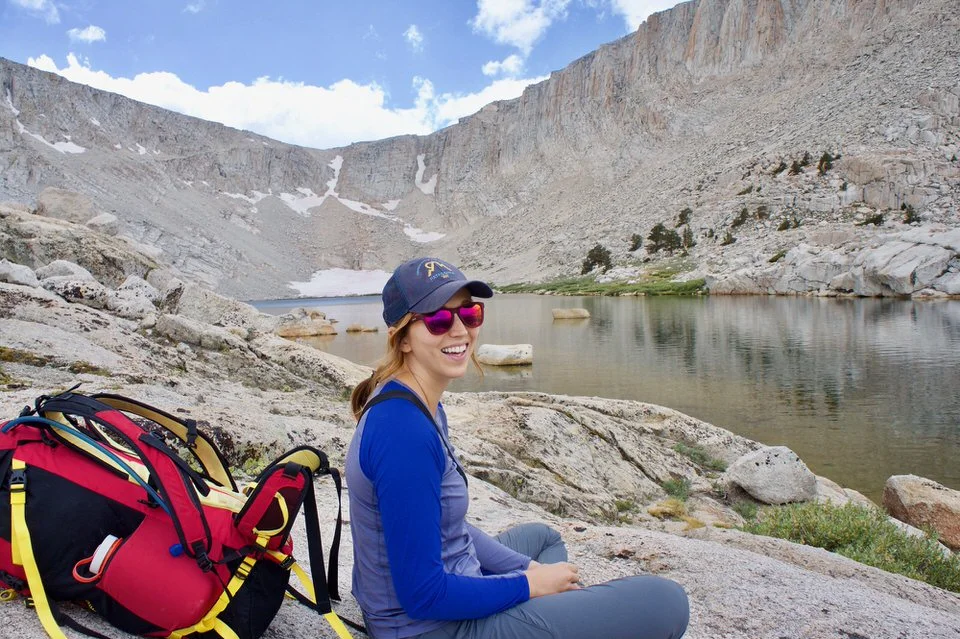




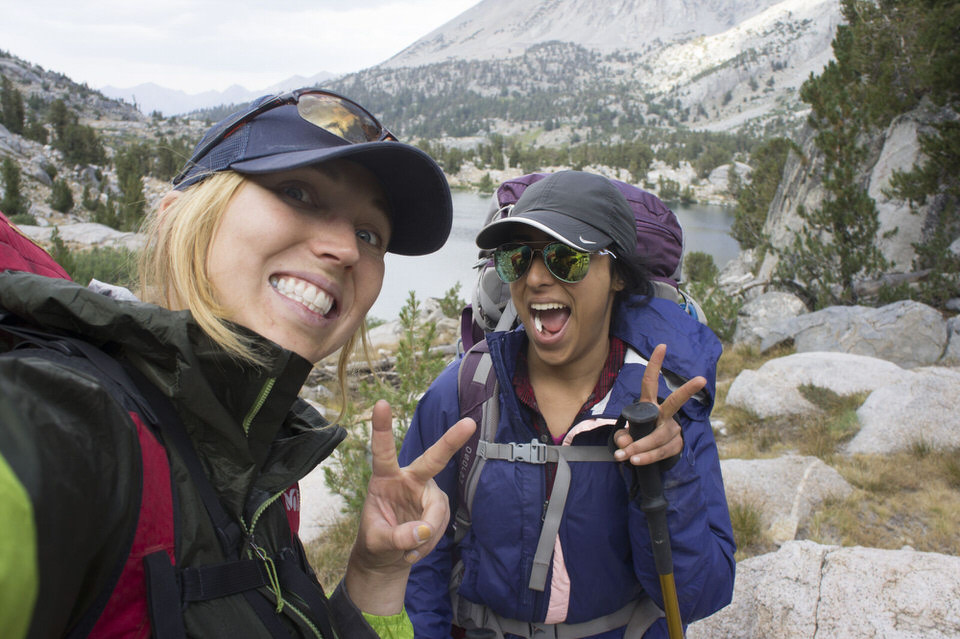
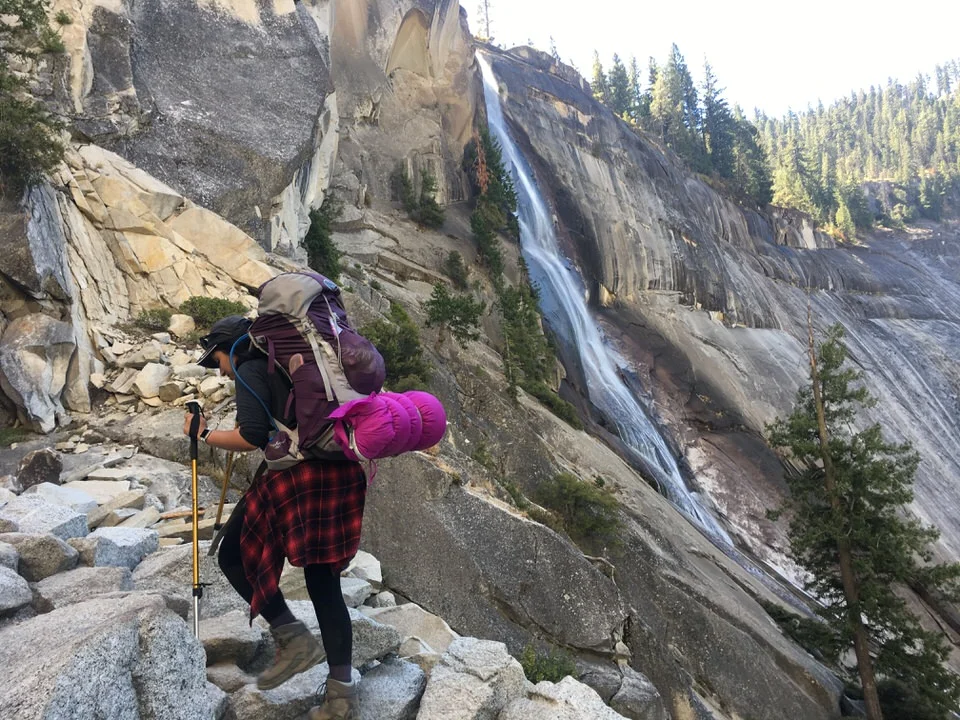
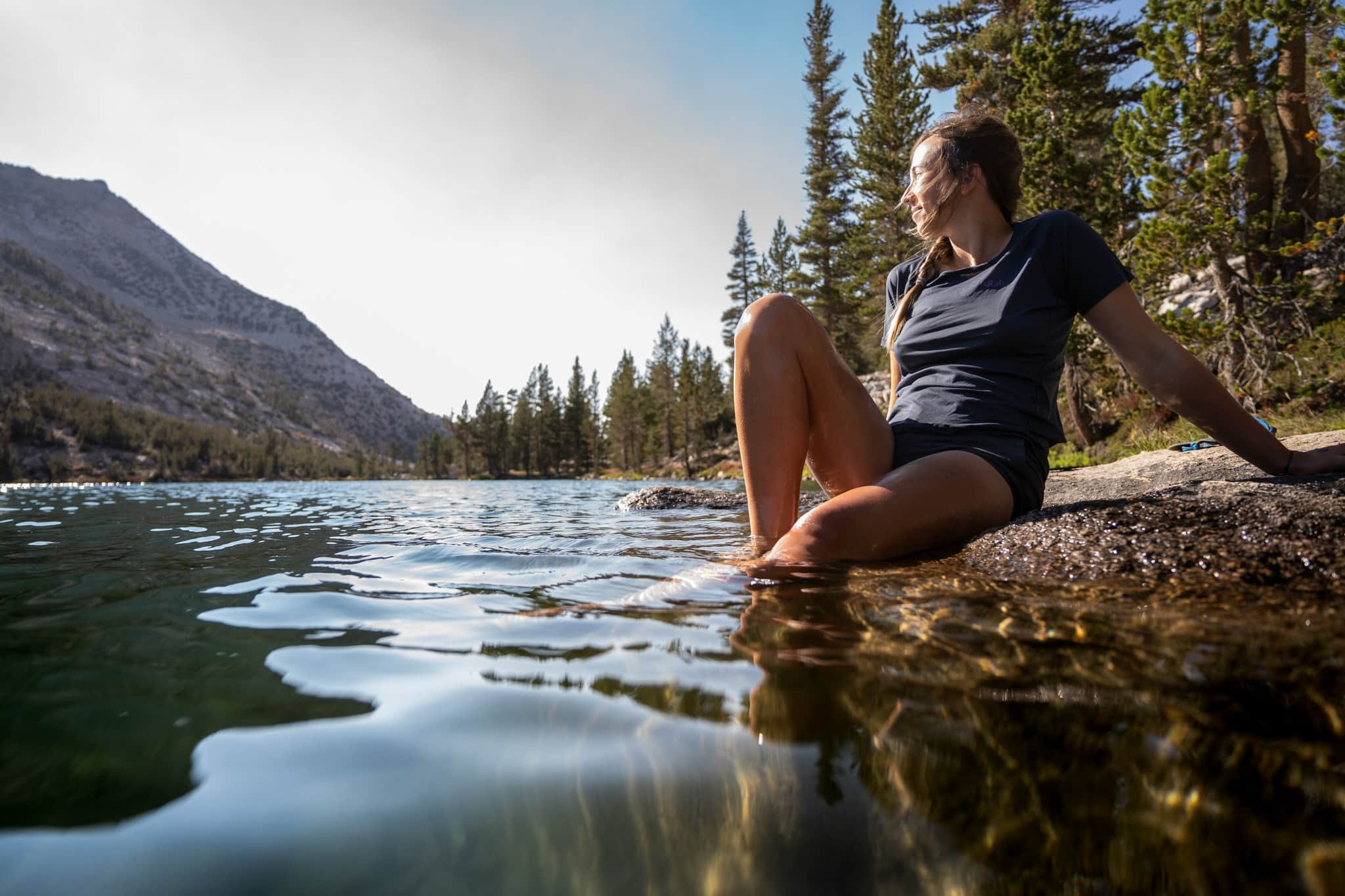
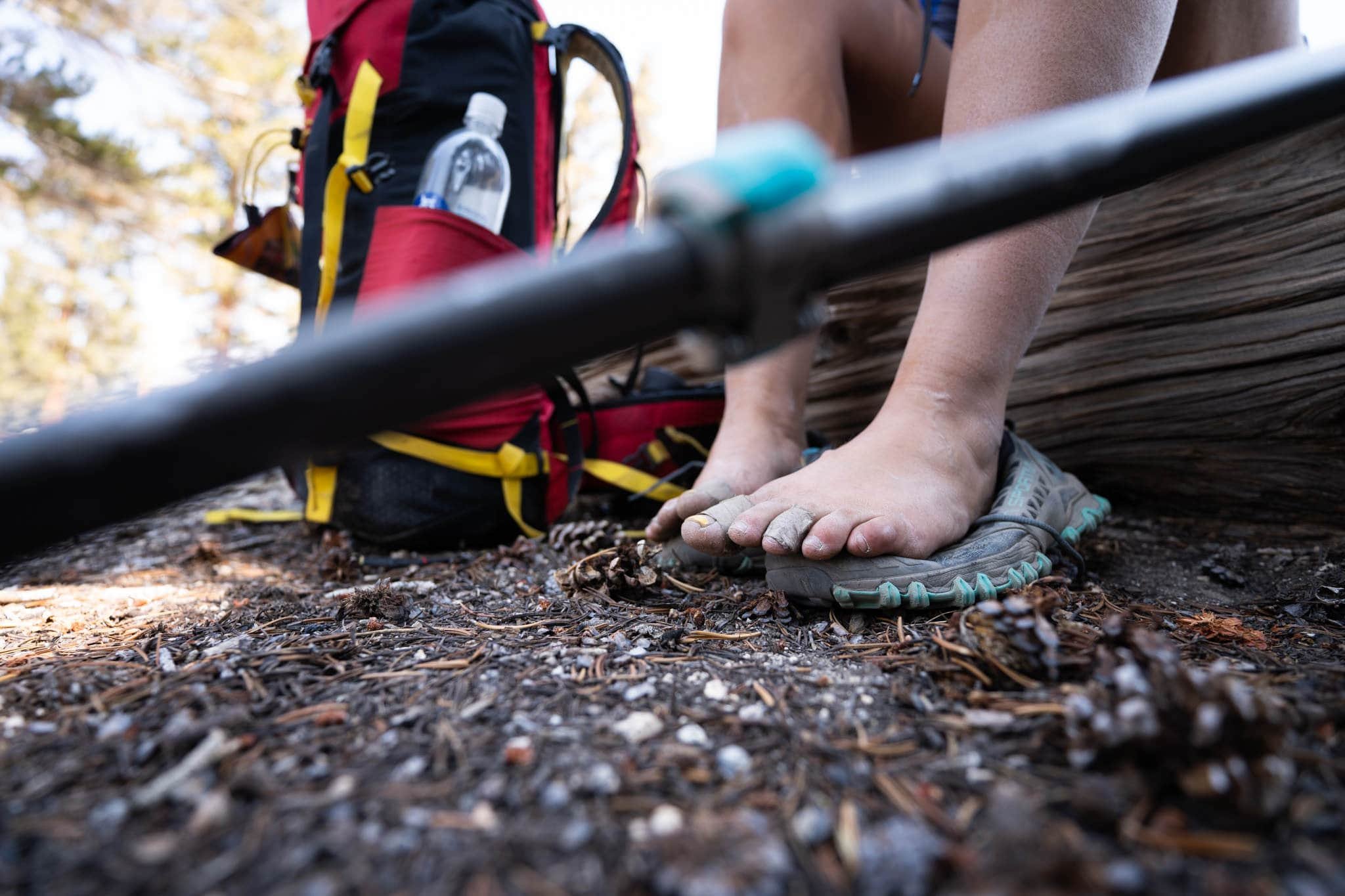
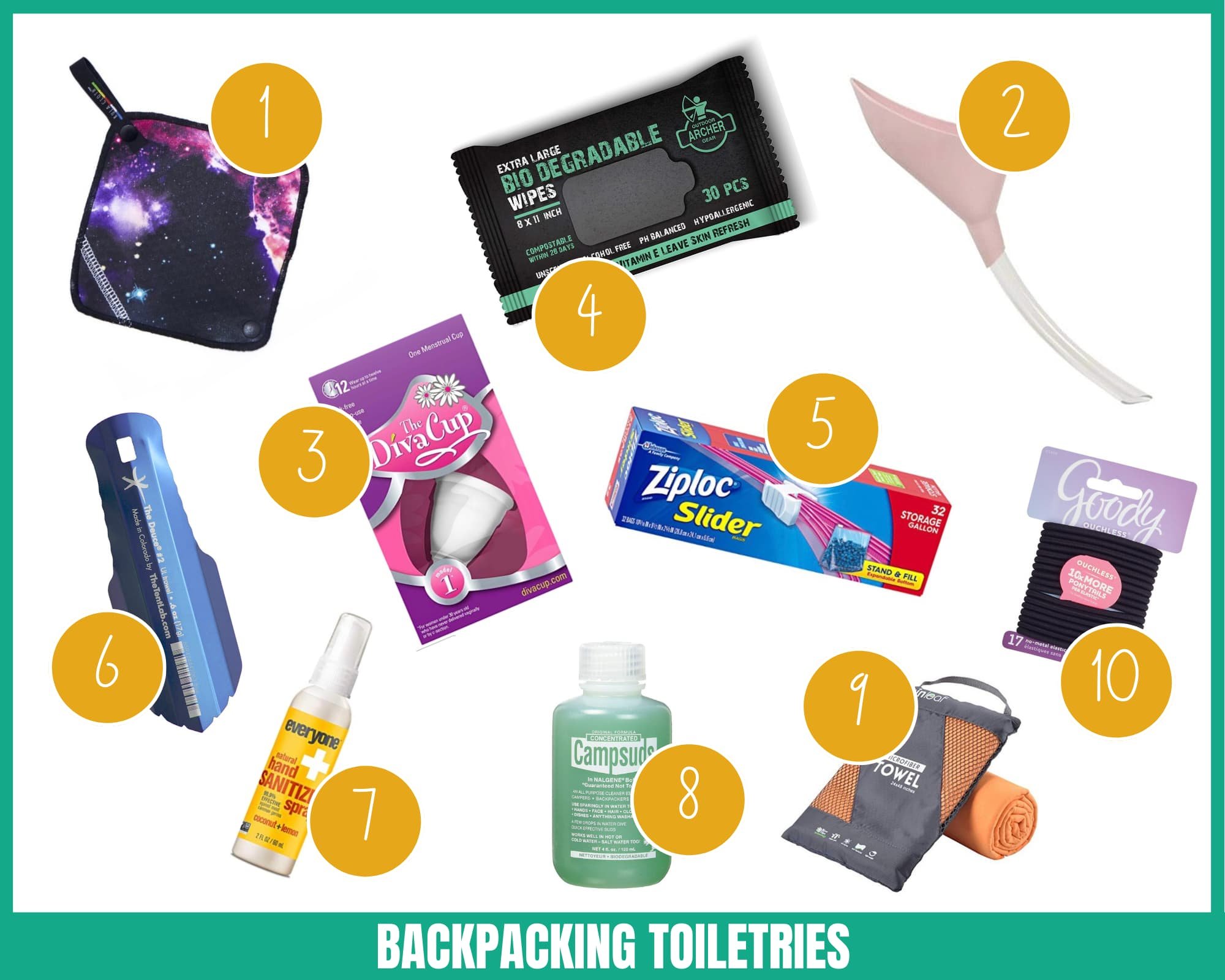

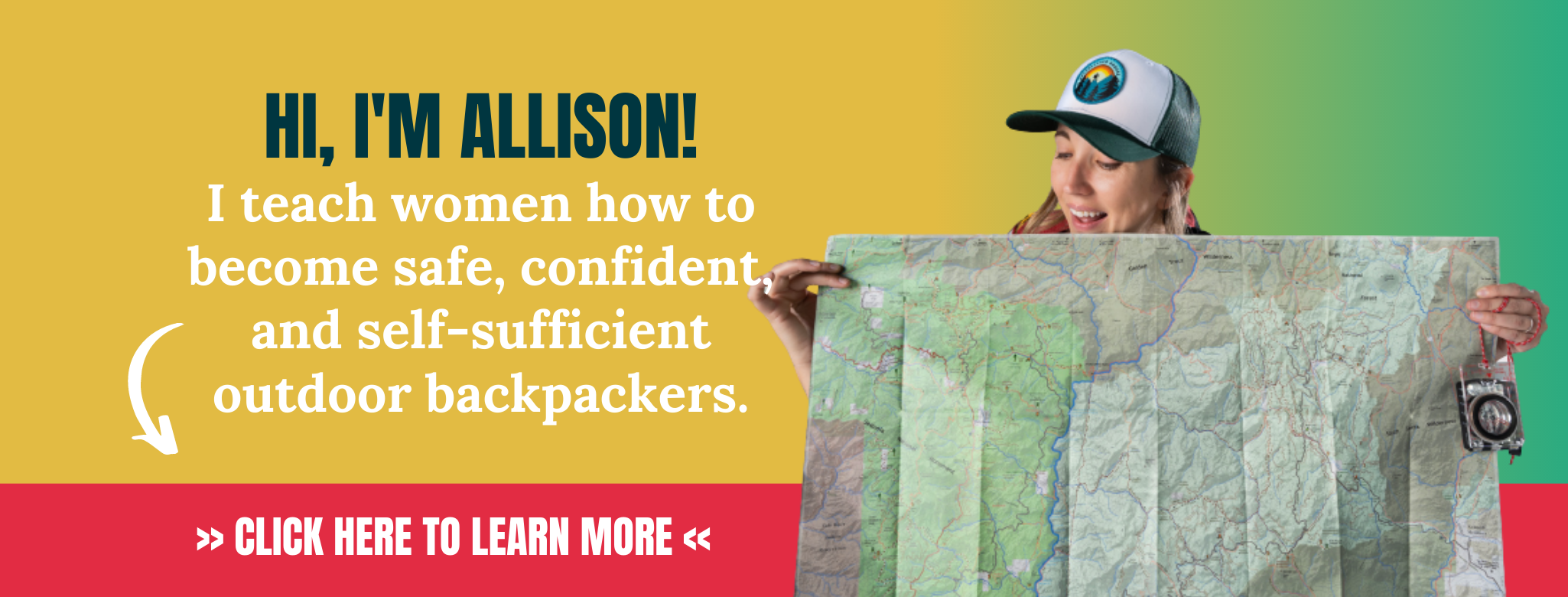


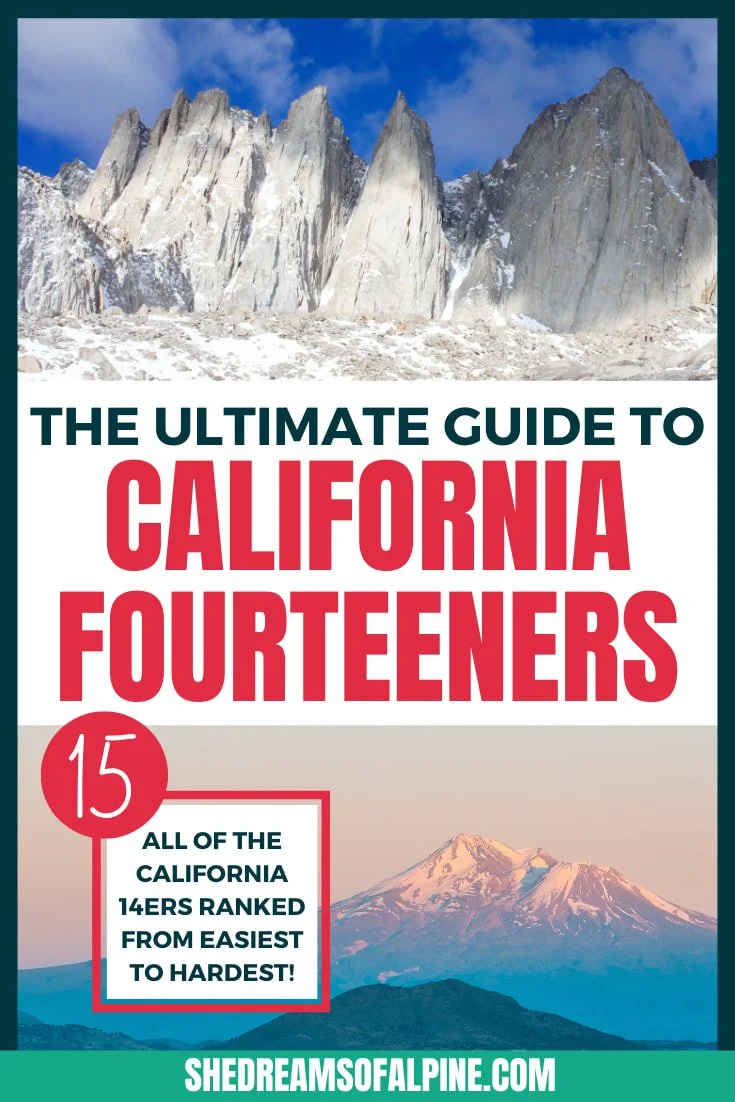


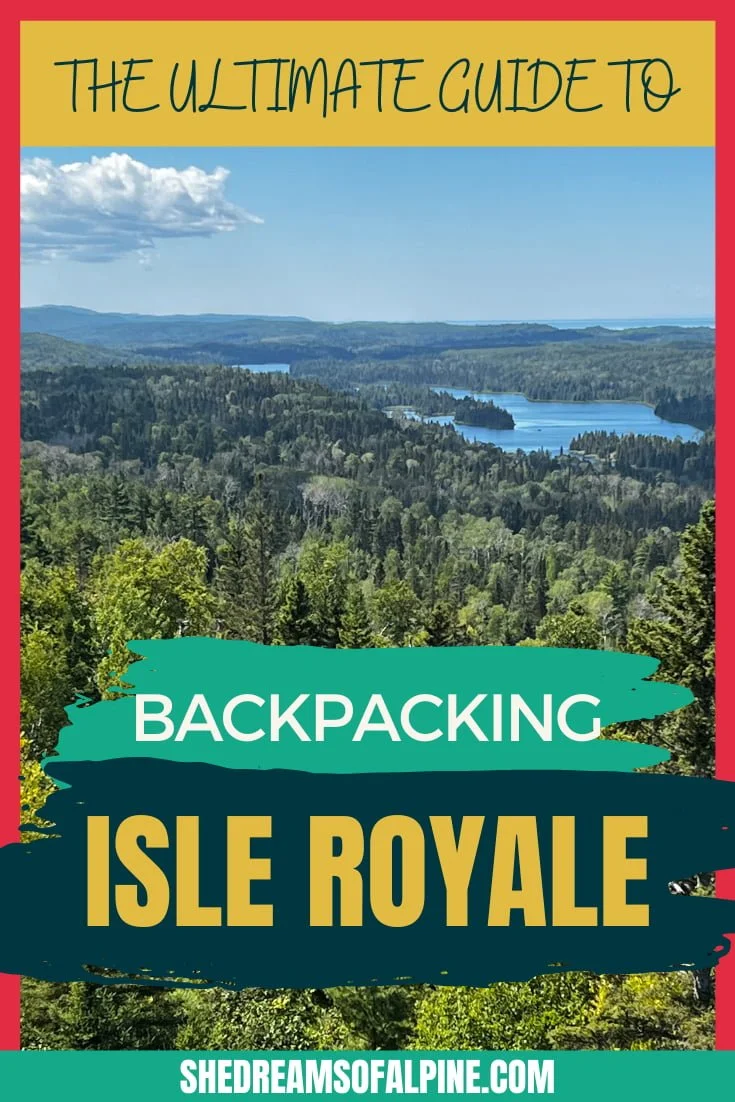
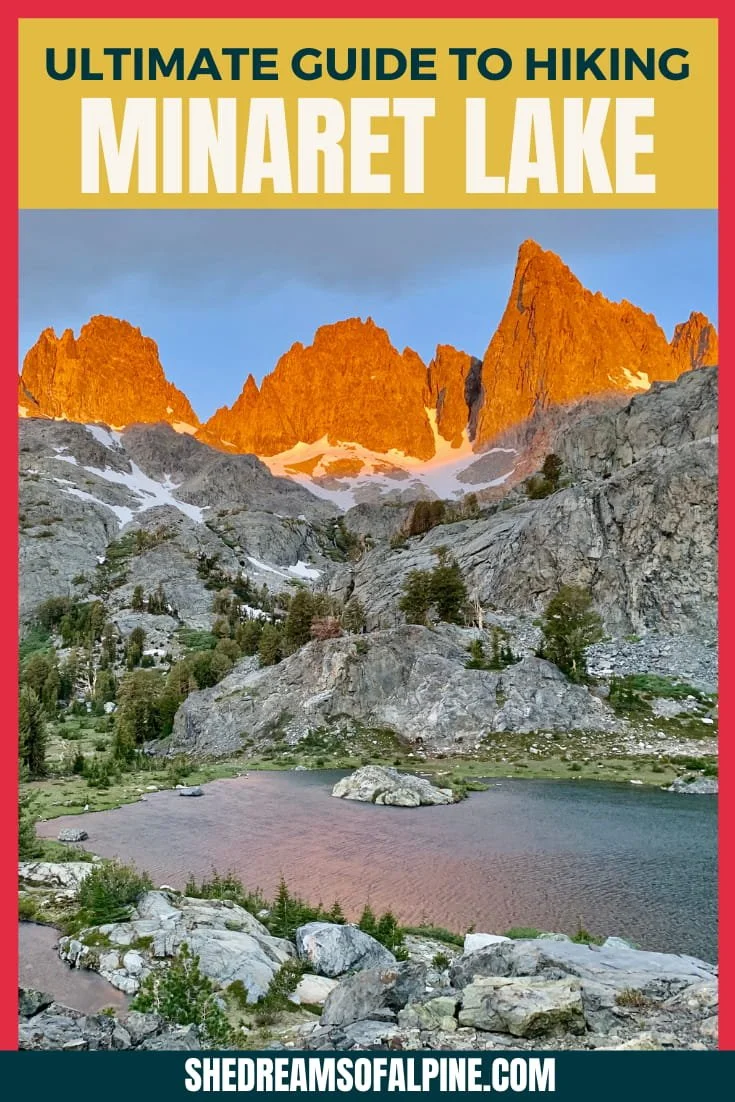



The Ultimate Guide to Idaho’s Alice Lake Hike & Backpacking the Alice Toxaway Loop in the Sawtooth Mountains | If you’re looking for a show-stopping hike or backpacking trip in Idaho’s Sawtooth Mountains, then look no further. The Alice Lake Hike and Alice-Toxaway Loop are some of the most beautiful trails I’ve ever hiked on and are a must-do for any visit to Idaho. | shedreamsofalpine.com